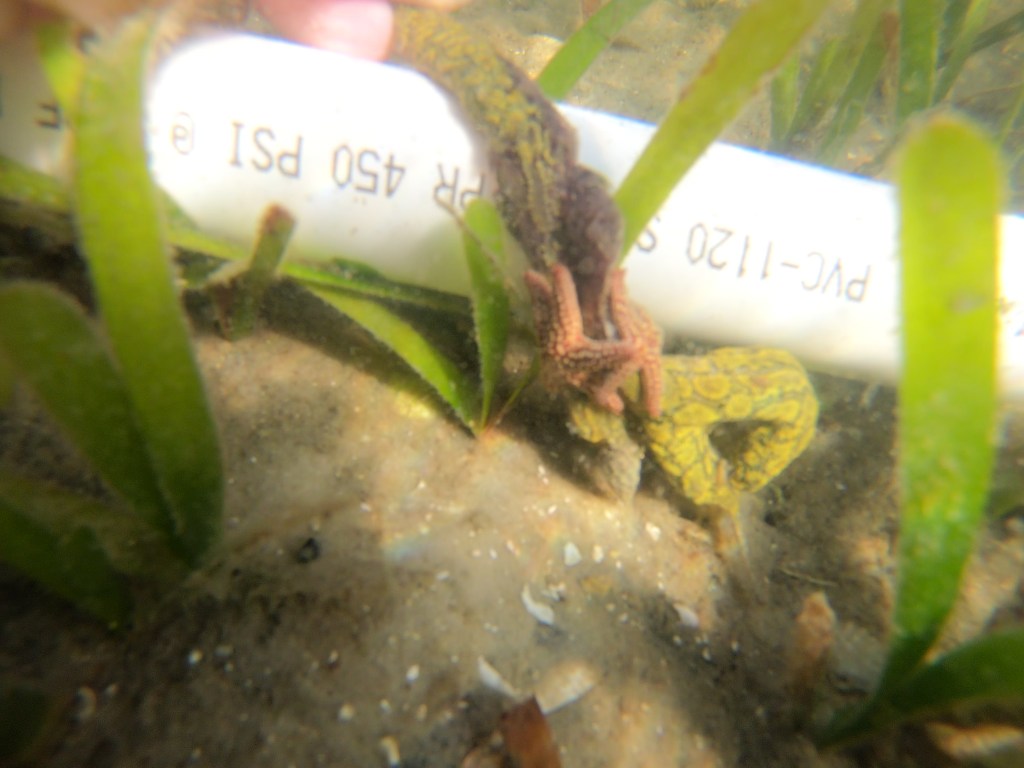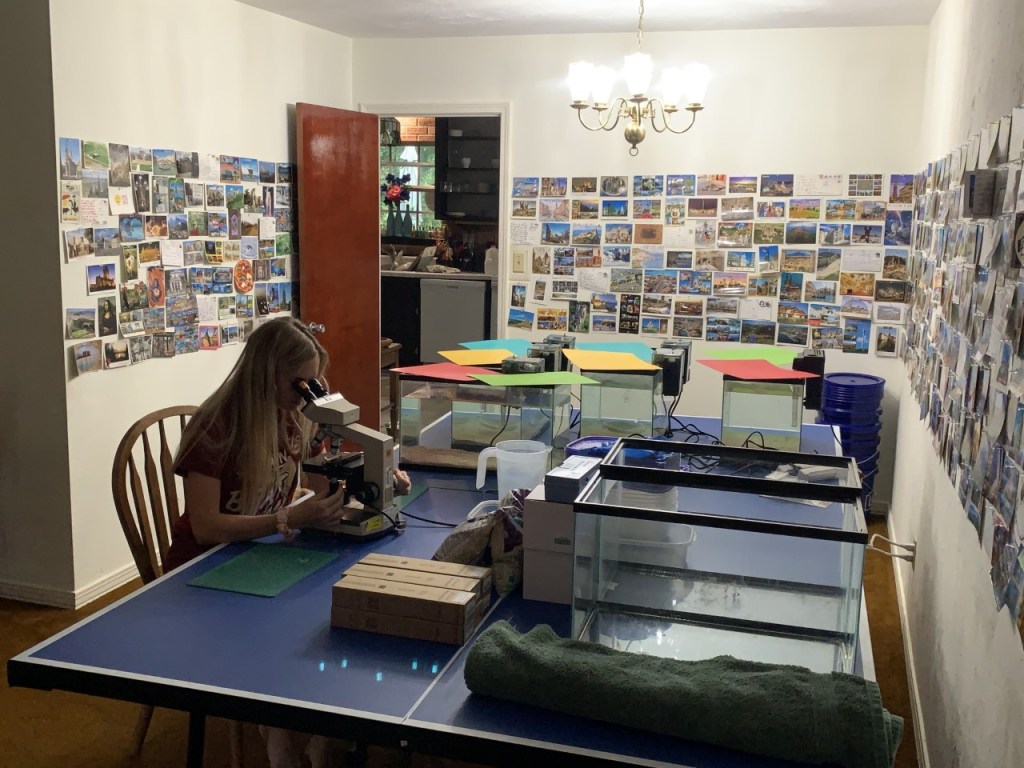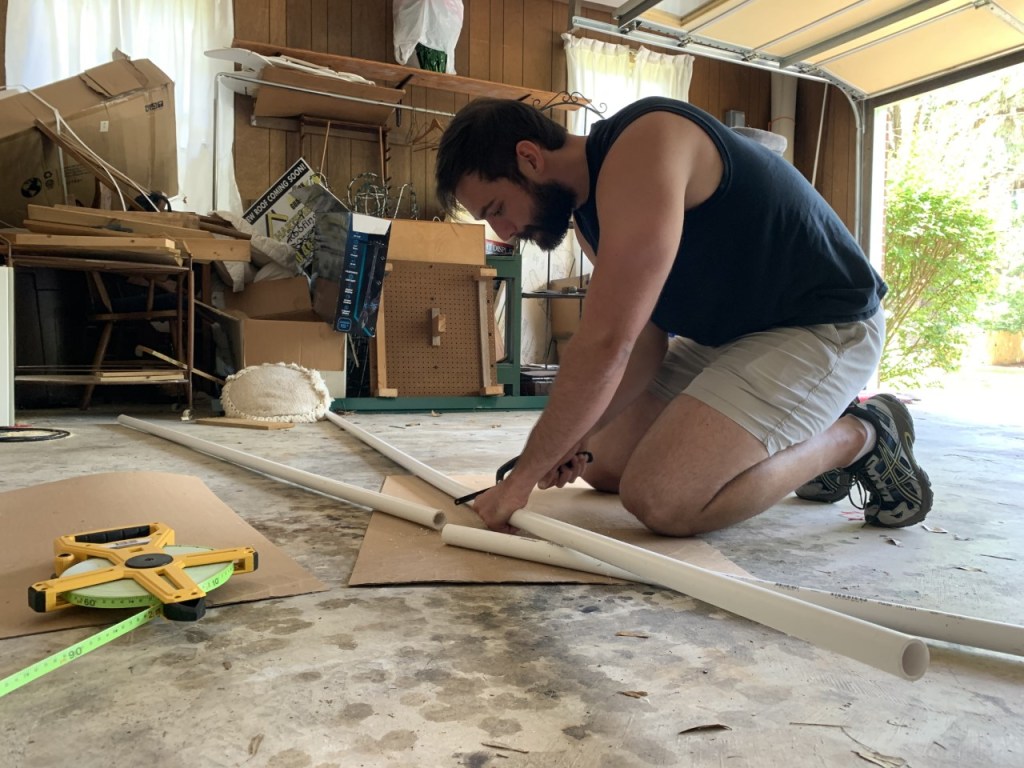Morgan Hawkins and Benton Jaco received a team IDEA Grant for their summer research project tentatively titled “Starfish mediating Ascadian populations”. Their faculty mentor is Prof. Janie Wulff in the Department of Biological Science.
Our project is focused on St. Joseph Bay, we’ve noticed many encrusting tunicates have surrounded seagrass blades and because of this the starfish are now eating the encrusting tunicates. In Fall 2019 our Marine Invertebrate Zoology class, instructed by Dr. Janie Wulff, took a field trip to Port Saint Joe to collect specimens for the lab and based on what we saw in the bay, created for a short scientific study. While snorkeling we noticed the common starfish in St. Joe Bay (The Echinaster) was feasting on the encrusting tunicates. This was interesting because the encrusting tunicates in question have no known predators in St. Joseph’s Bay. We suspect since the tunicate populations are getting out of hand, the starfish are changing their diet to the more abundant food source, which in turn helps the seagrass.
In St. Joseph Bay we will be conducting field studies to map the populations of tunicates and starfish, measure the average sizes of each, as well as conduct some manipulative studies like bringing the starfish and various tunicates back to our home lab to see which tunicate species they prefer, and if they choose a more traditional food source (Sponges or Scallops) over the entrusting tunicates. We believe these increasing populations of encrusting tunicates are causing harm to the seagrass meadows. Since they cover the entirety of the seagrass blades and disallow the plant to undergo photosynthesis. We suspect the starfish’s response to the encrusting tunicates represent a significant shift in the overall ecosystem which has not previously been documented. While we still do not know for sure what mechanism is at play here our general hypothesis is that:
1. The overpopulation of encrusting tunicates significantly impacts the health of the seagrass ecosystem.
2. Starfish have shifted their diet to include encrusting tunicates, thereby providing mutualistic protection for the seagrass as a whole.
COVID-19 has definitely been a challenge to work with. Instead of working in a lab with preexisting lab equipment, we had to start from scratch, gathering much of what we could from Amazon and setting it up in the living room of Morgan’s home. Thankfully our advisor, Dr. Janie Wulff, was able to provide us with some needed lab supplies including 6 tanks, 2 microscopes, and some tupperware. Her assistance allowed us to expand some of our research areas as we couldn’t have bought our own microscopes. Due to a lack of a large lab space we resulted in using my ping pong table as the main lab area, with 6 full tanks with filters and all set up. We’ve also had to construct our own quadrants and Secchi disk instead of borrowing these materials from the lab. Our original plan was to rent a boat in Port Saint Joe, however, now we are using Morgan’s grandfather’s boat to limit exposure. This also meant Morgan had to ask to borrow her mother’s F-150 truck to tow the boat for 3 months, since her and Ben’s vehicle were incapable. Luckily both Tex Hawkins (grandfather) and Angie Hawkins (mother) were very gracious and helpful in supporting Morgan and Ben during this experiment. Much of our materials were ordered from Amazon, but for filters, salt water, sand, air pumps, we relied on local businesses. They were excited for our support, assisting us with picking out materials, and gave advice for how to establish saltwater tanks. It was very fulfilling to help these small pet stores in Tallahassee during these times. We’d like to thank Panhandle Pet Supply on North Monroe and High Tide Aquarium for their support.






